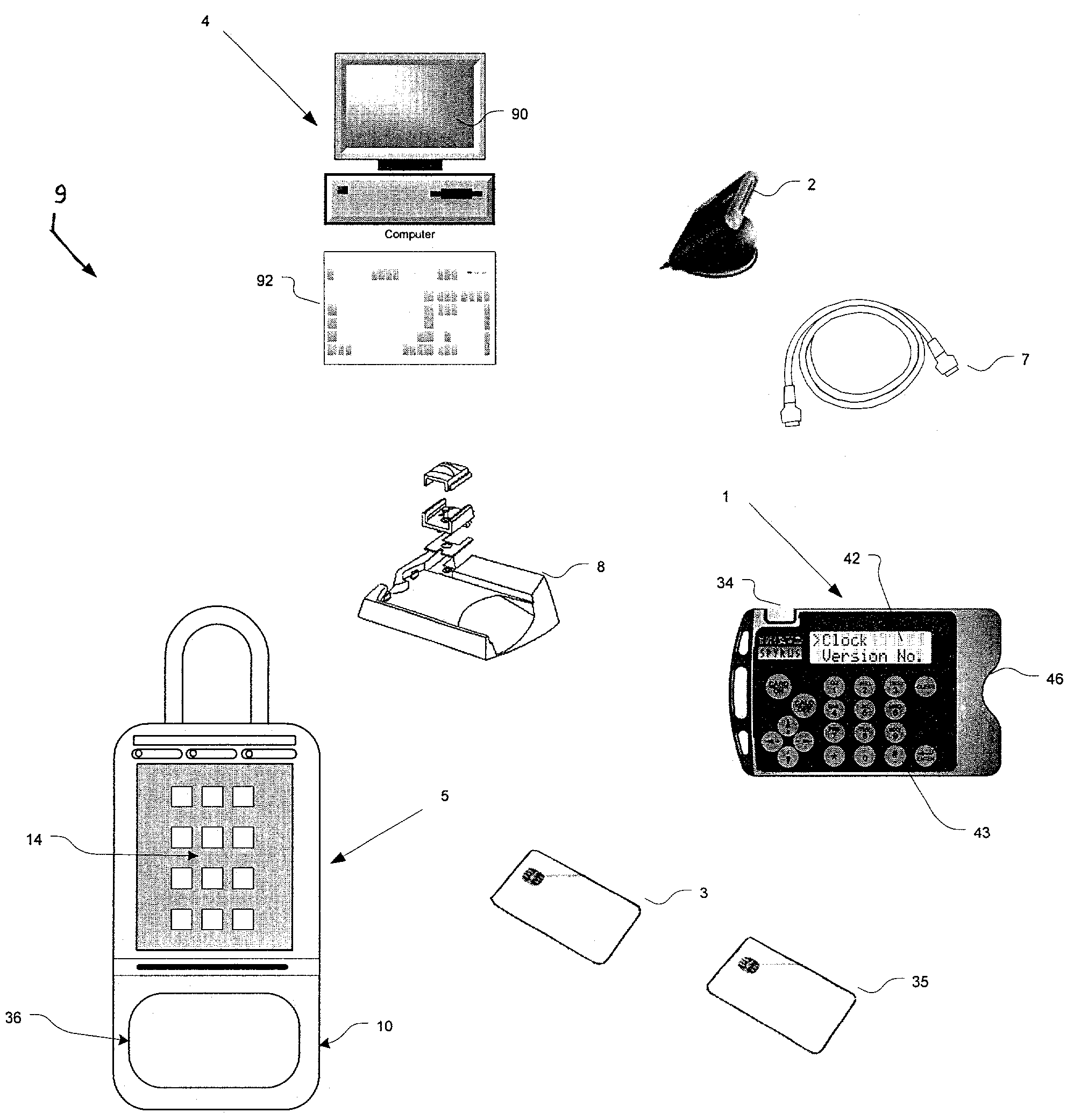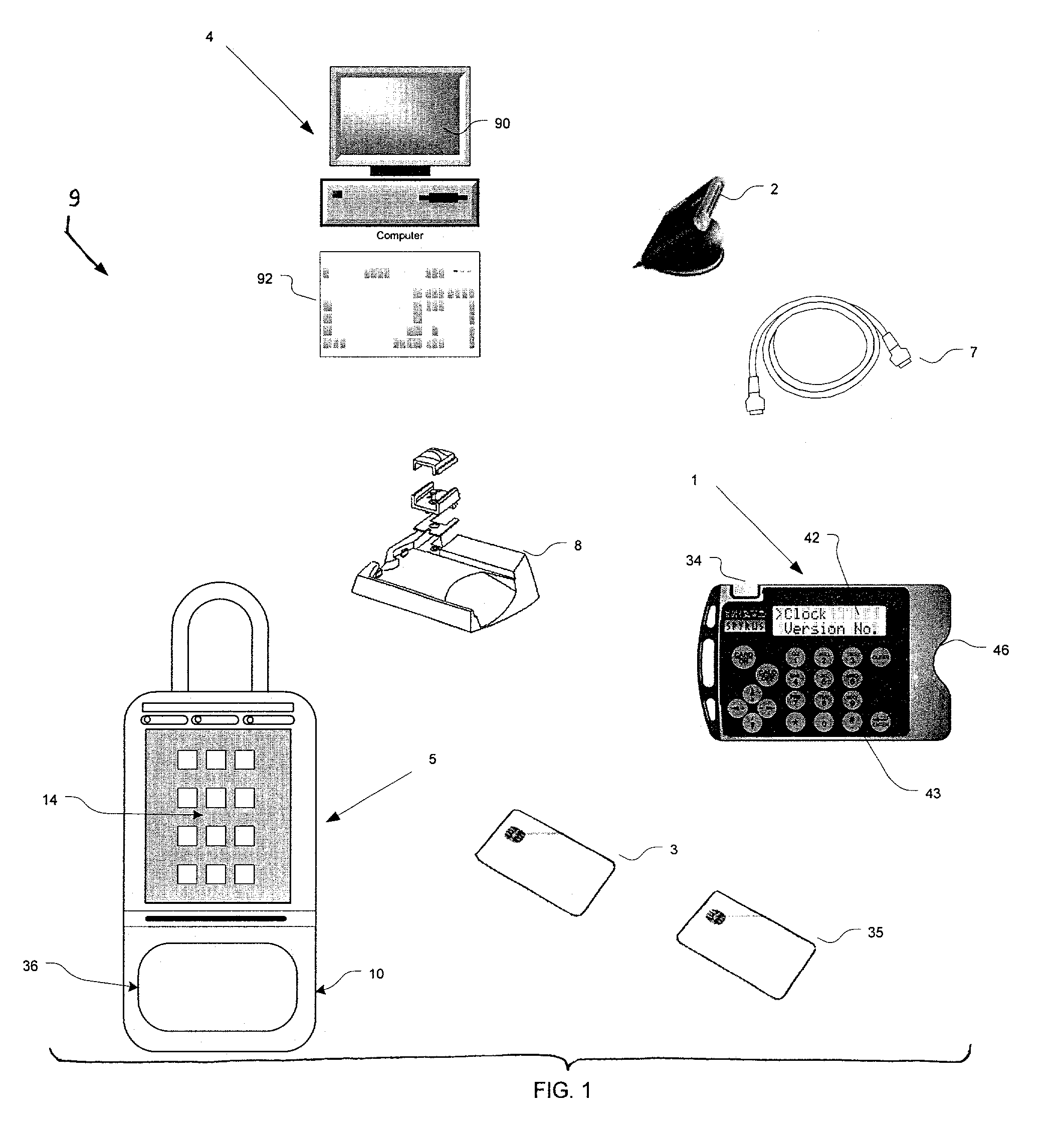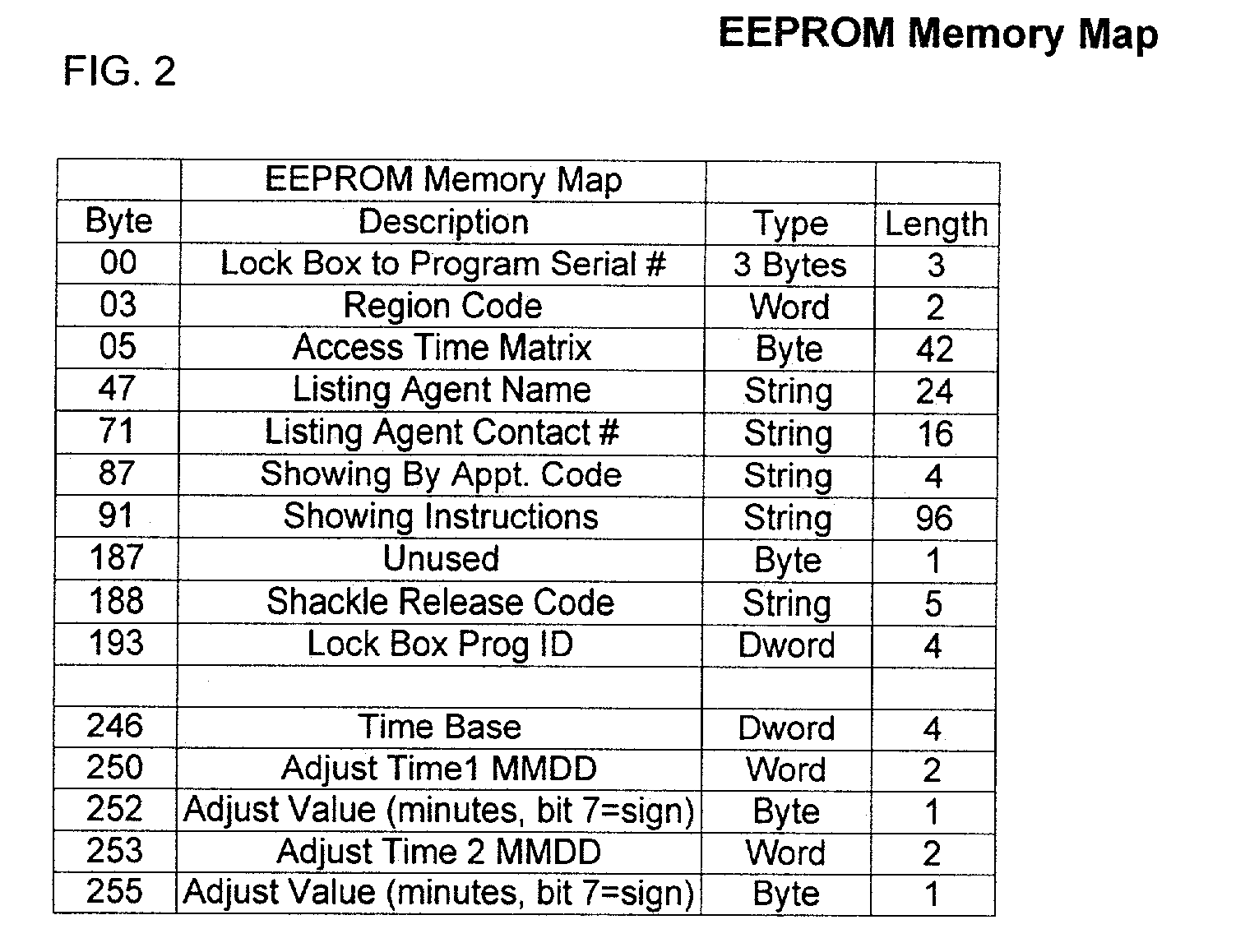Electronic lock system and method for its use with card only mode
a technology of electronic lock and card only, applied in the field of electronic lock system, can solve the problems of inapplicability, inability to address the fundamental problem of conventional systems, and increasing the number of electronic key solutions in prior art systems
- Summary
- Abstract
- Description
- Claims
- Application Information
AI Technical Summary
Benefits of technology
Problems solved by technology
Method used
Image
Examples
Embodiment Construction
[0047]Reference will now be made in detail to the present preferred embodiment of the invention, an example of which is illustrated in the accompanying drawings, wherein like numerals indicate the same elements throughout the views.
[0048]The present invention supports two distinct lock box access methodologies. The first methodology uses a system of conditional access code that are disclosed to the user for controlling lock box key compartment access. The access code is conveyed securely from the lock box to a portable computer via a secure memory device (also referred to as a “secure memory card”); moreover, the access code is generated as a random number (by the lock box) and is generated in real time as the attempted access is in progress. Depending on expiration status and other factors, the portable computer determines whether the lock box access code should be revealed to the user.
[0049]The main security aspect of the system (of this first methodology) relies upon randomly-gen...
PUM
 Login to View More
Login to View More Abstract
Description
Claims
Application Information
 Login to View More
Login to View More - R&D
- Intellectual Property
- Life Sciences
- Materials
- Tech Scout
- Unparalleled Data Quality
- Higher Quality Content
- 60% Fewer Hallucinations
Browse by: Latest US Patents, China's latest patents, Technical Efficacy Thesaurus, Application Domain, Technology Topic, Popular Technical Reports.
© 2025 PatSnap. All rights reserved.Legal|Privacy policy|Modern Slavery Act Transparency Statement|Sitemap|About US| Contact US: help@patsnap.com



